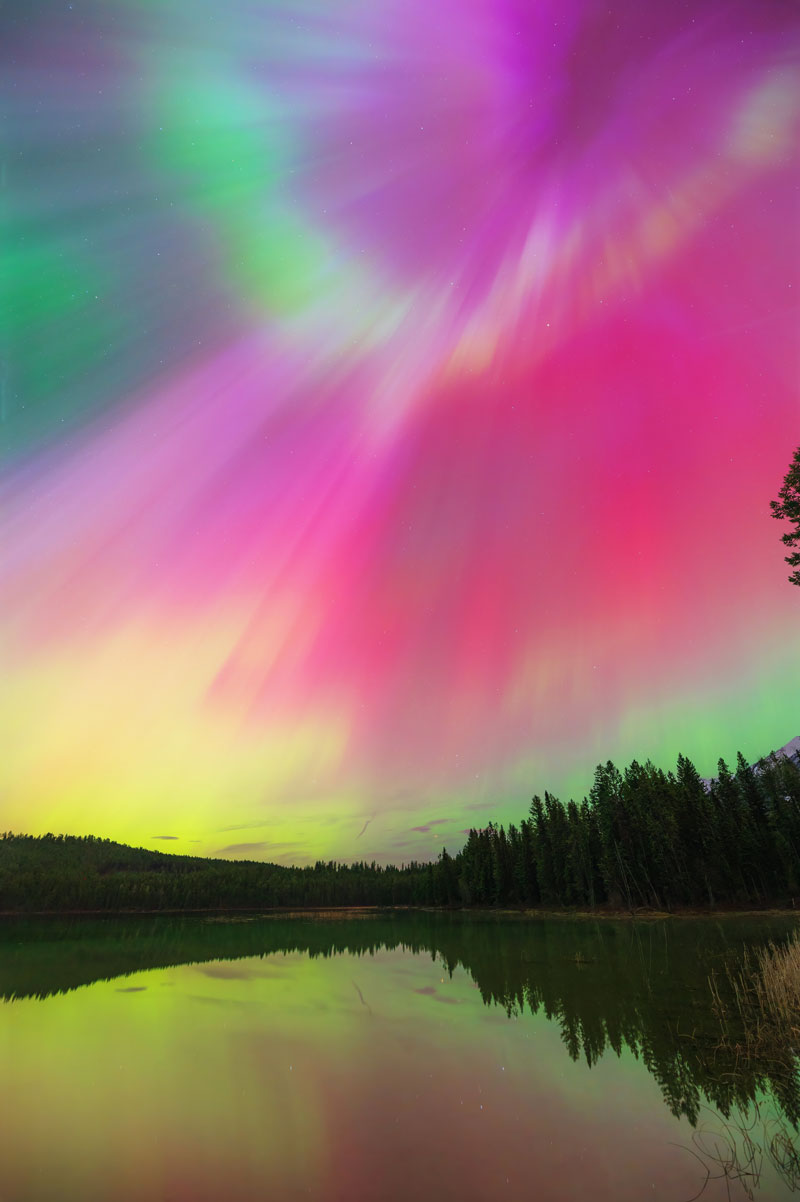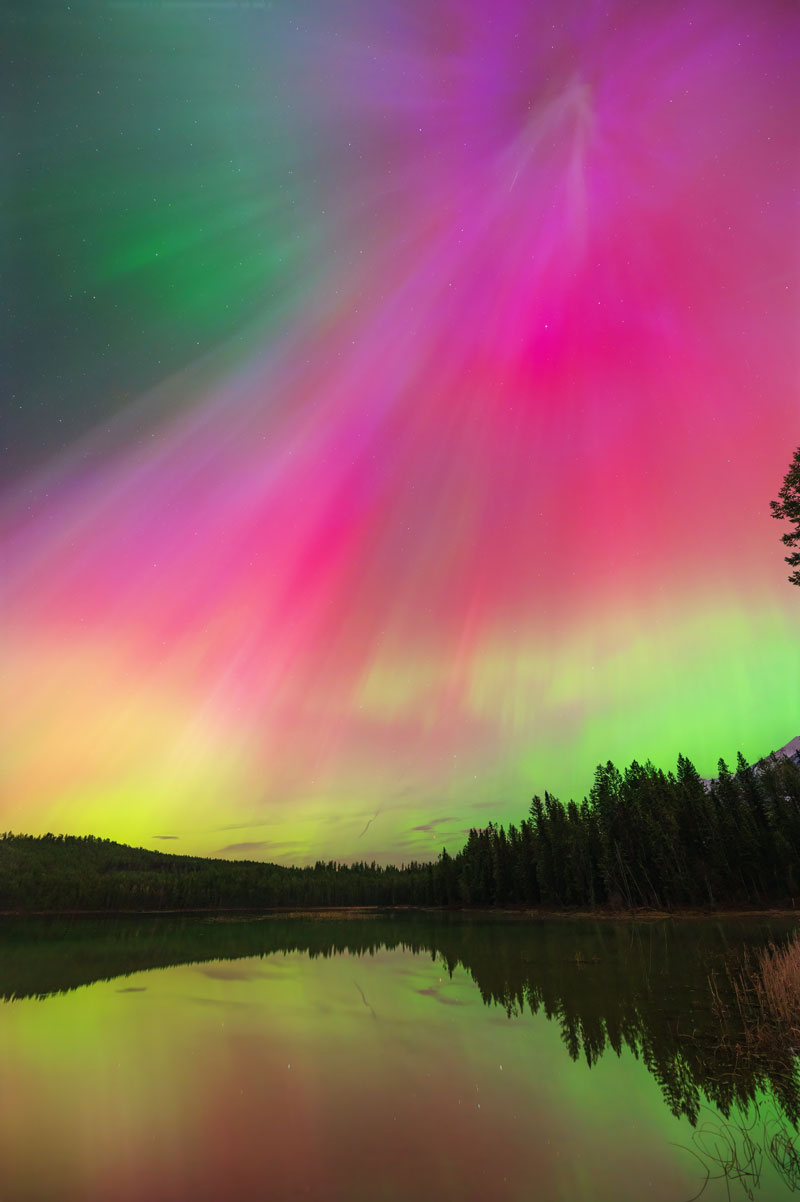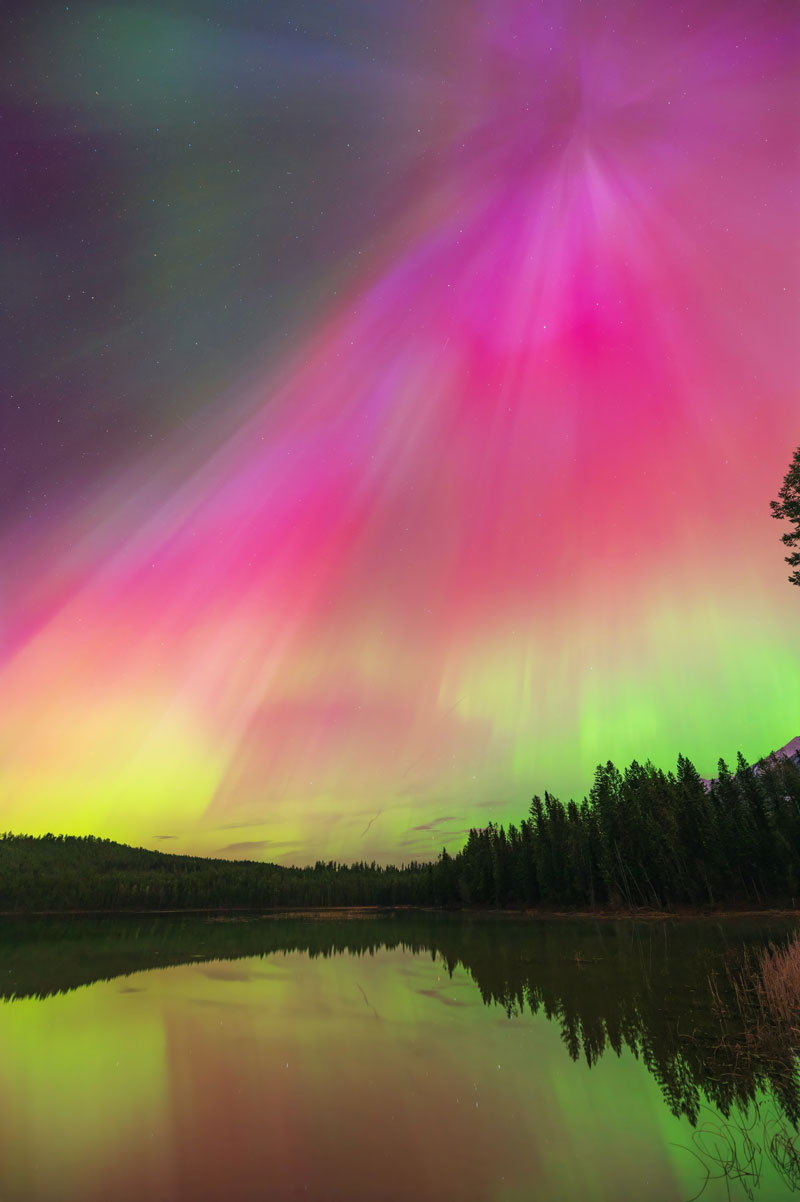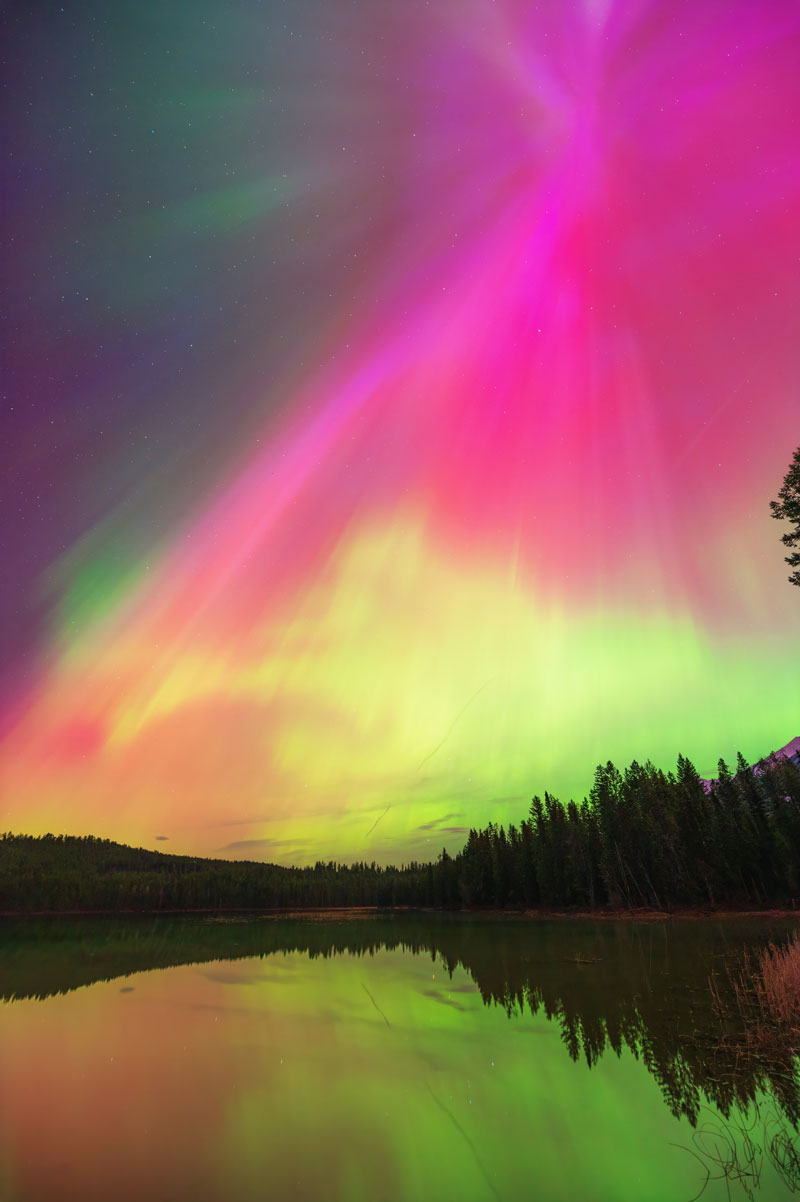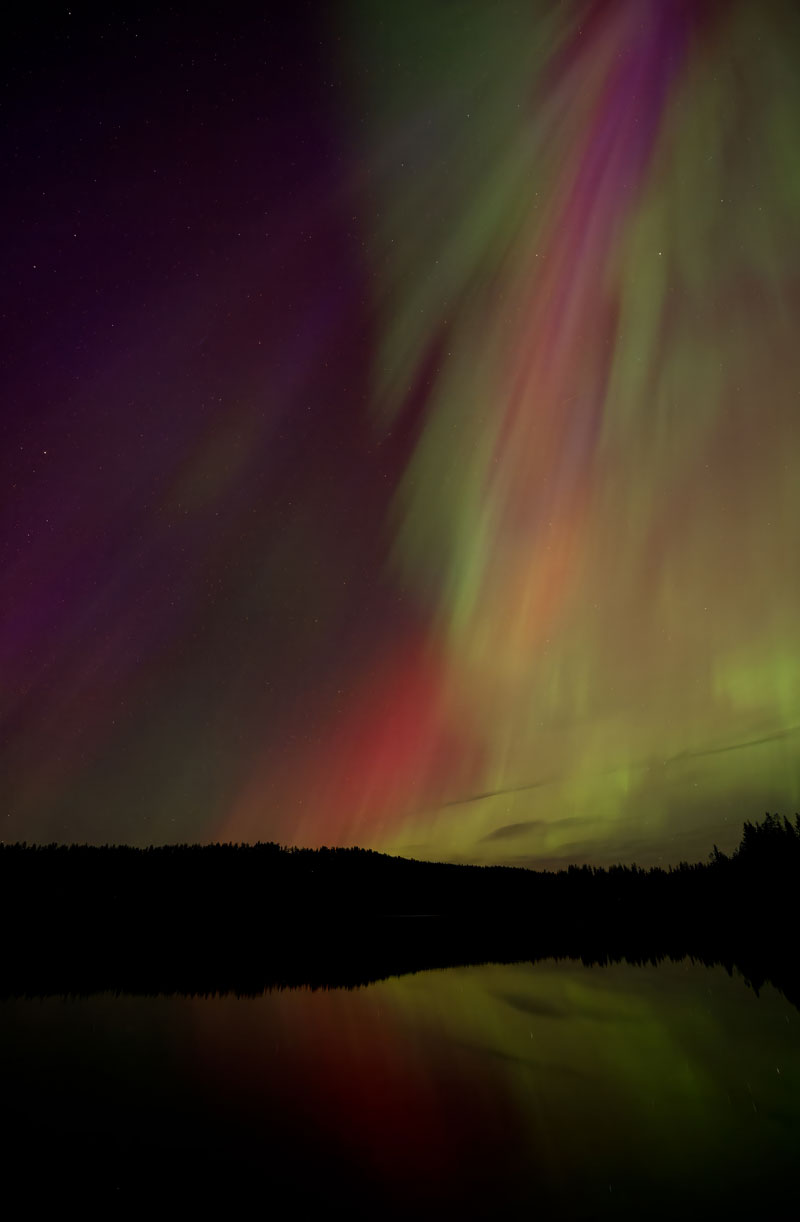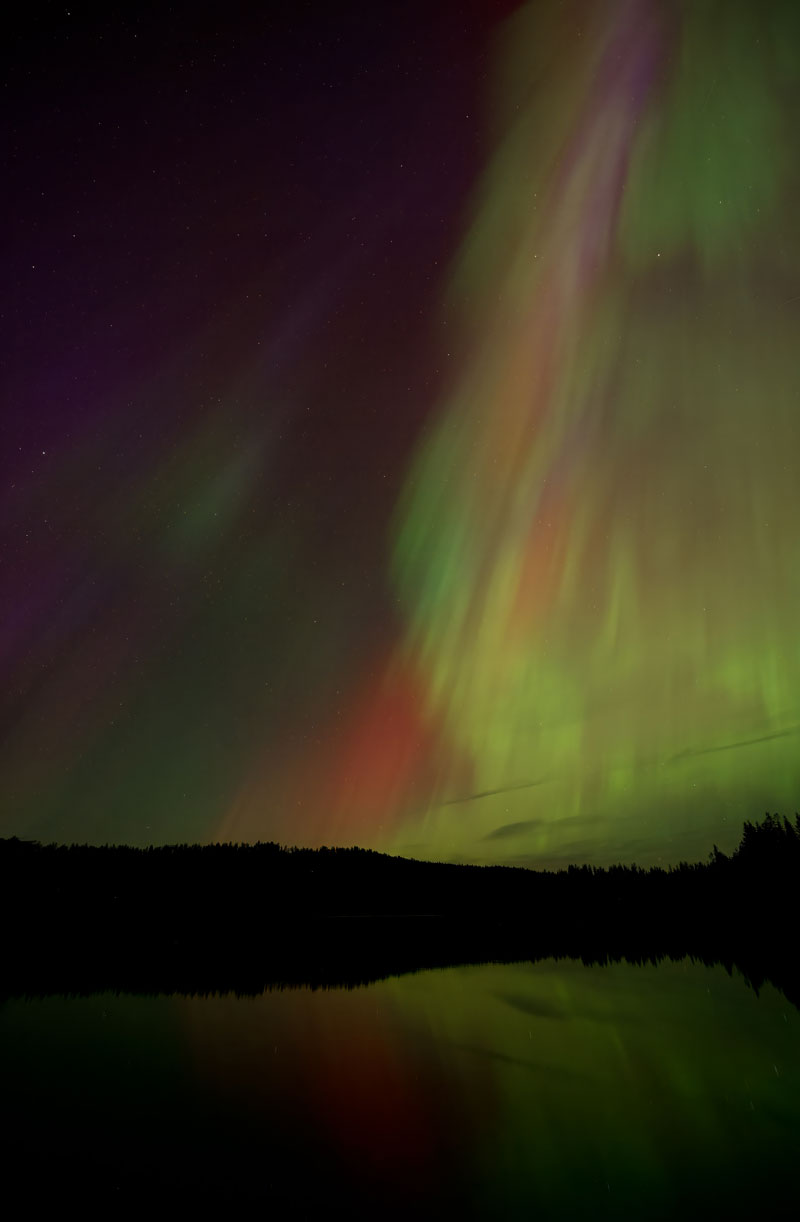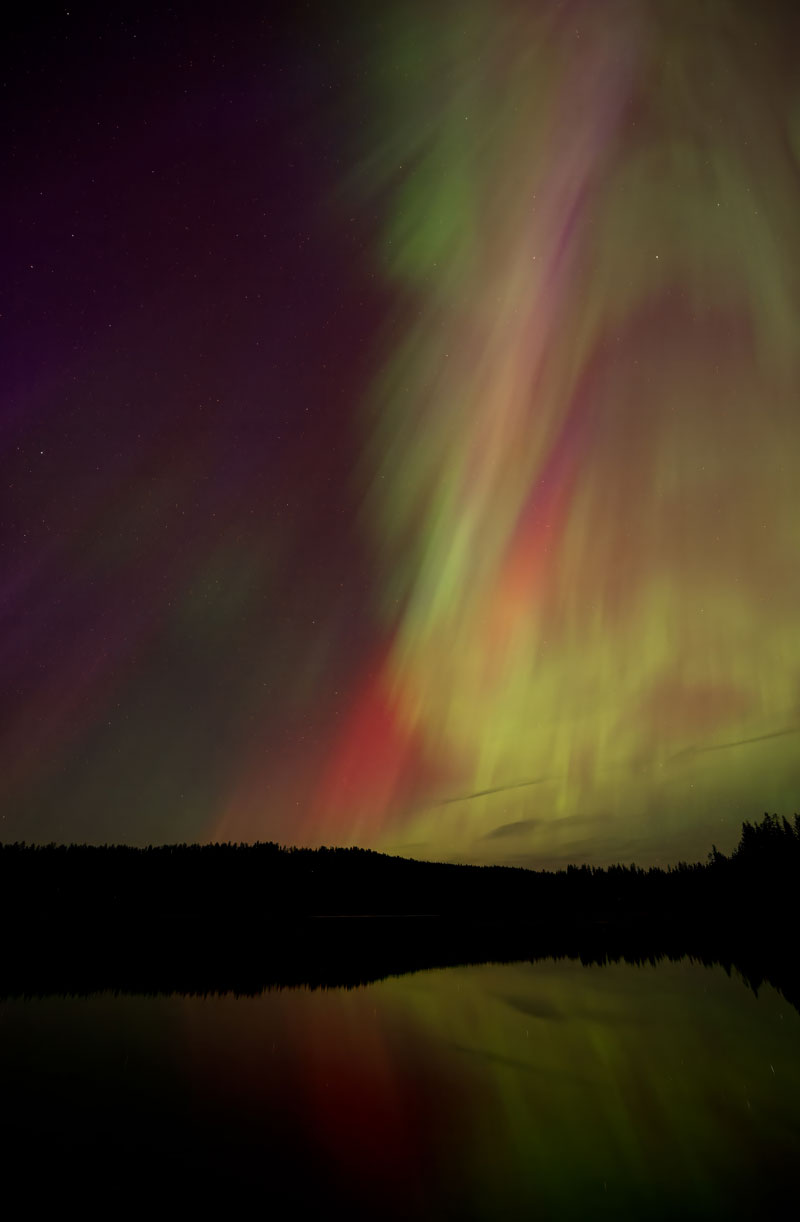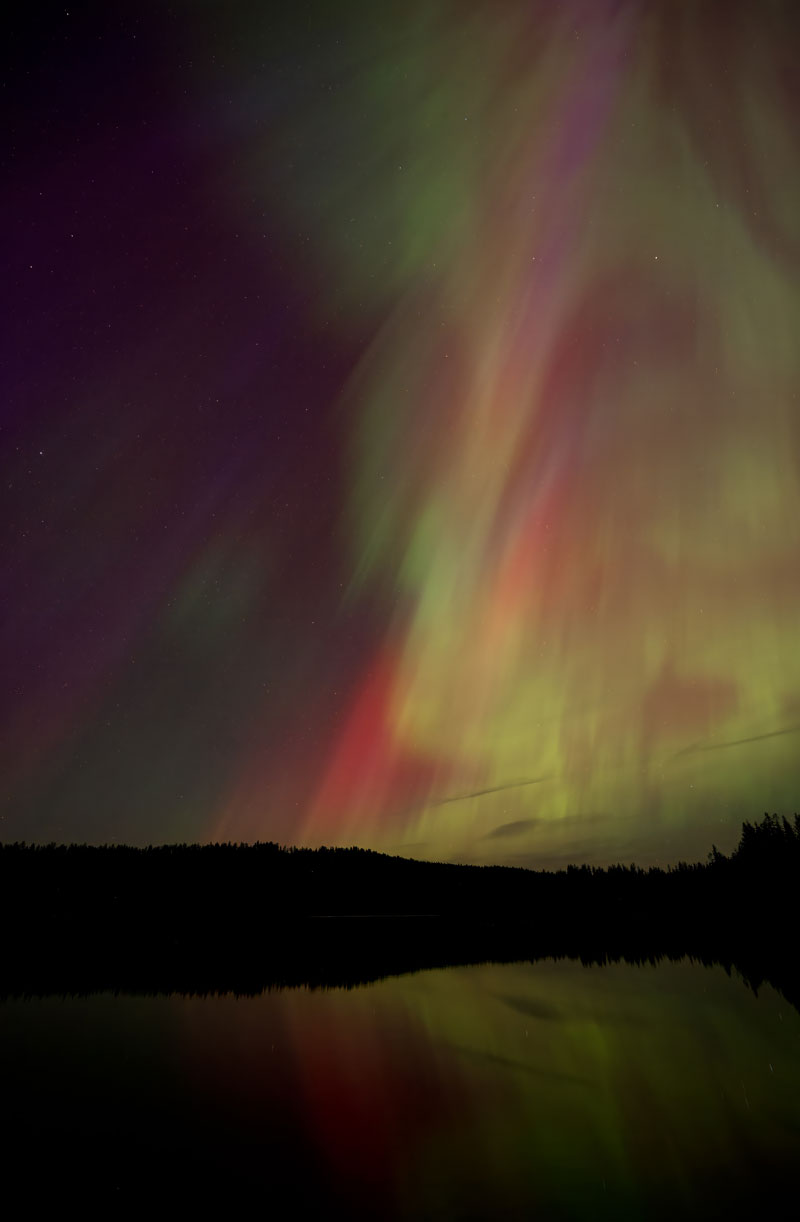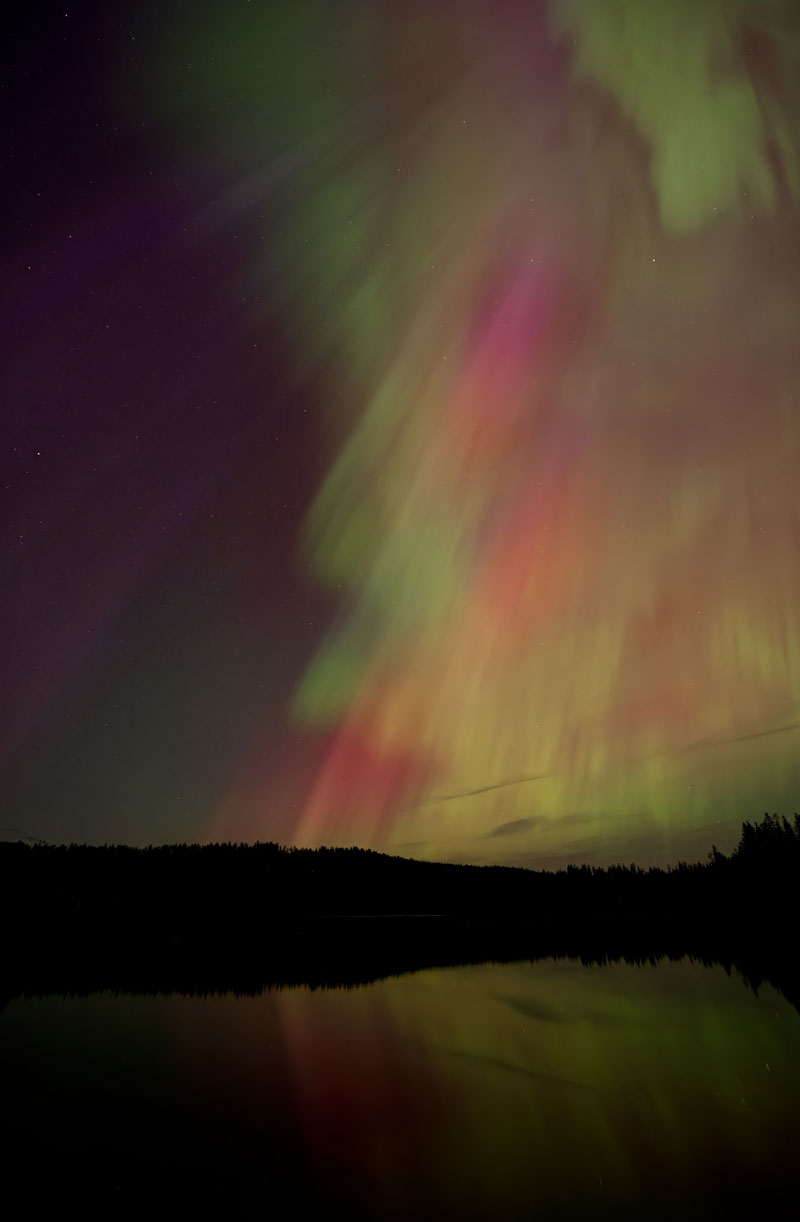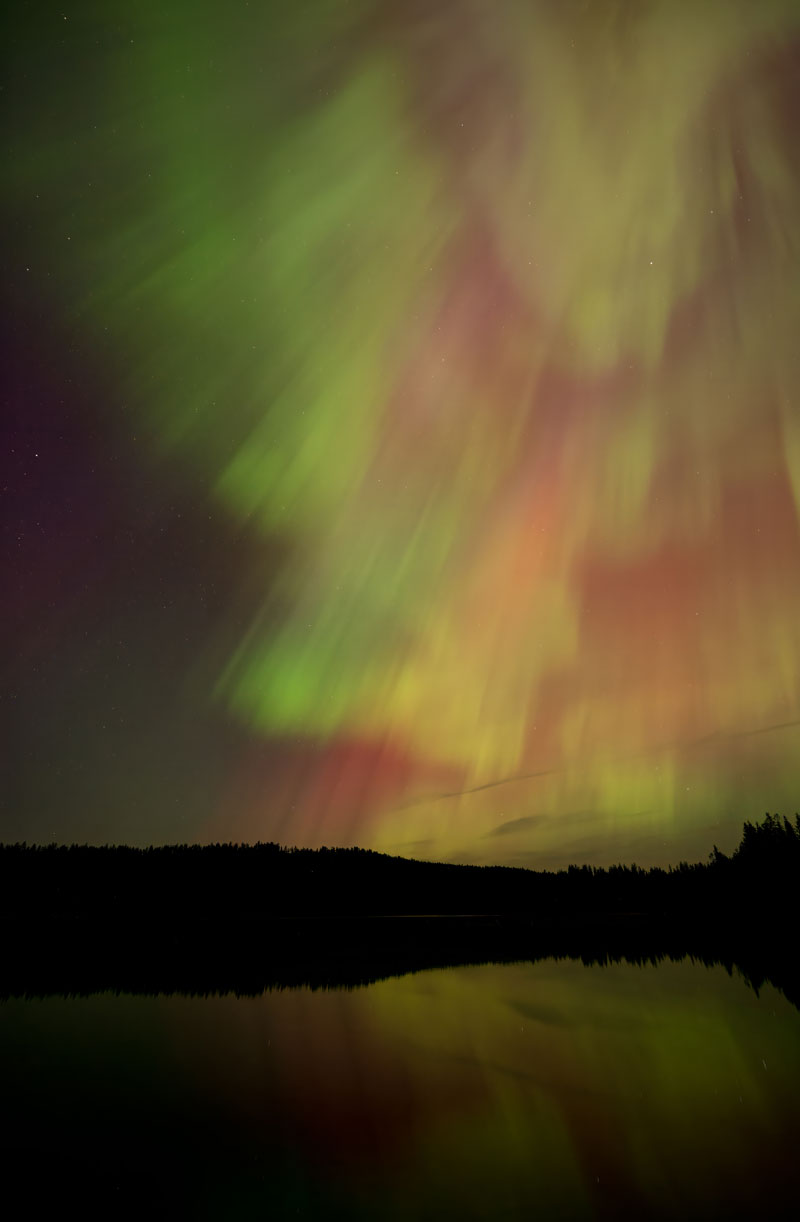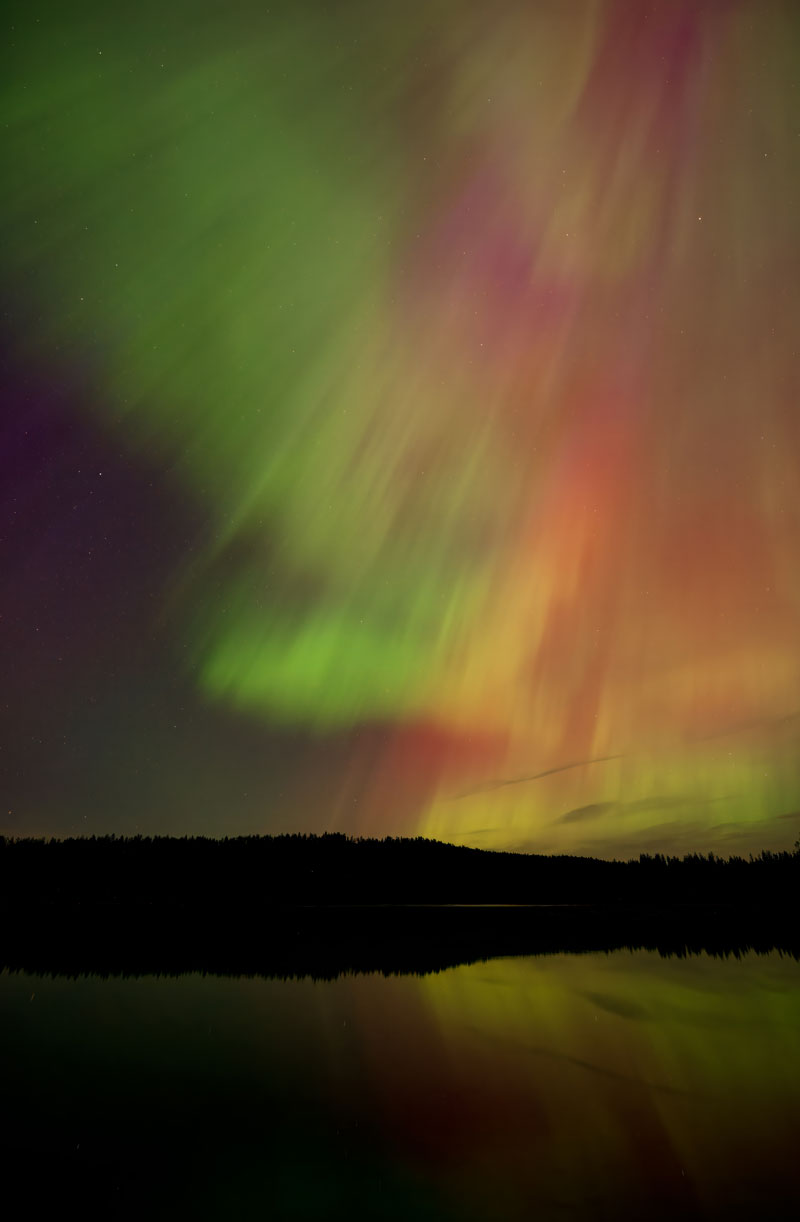Painted Skies Aurora
My plan was to capture an Aurora reflecting on water. Buffalo Lake or Cartwright? The two are hundreds of miles/km apart. Buffalo was closer. Cartwright was darker. I checked the cloud forecast at Windy (amazing app), saw clearer skies over Cartwright, and the decision was made. Thankfully, I made the right call. Cartwright Lake delivered incredible aurora reflections May 10-11, 2024.
But I didn’t get just one…I got 2,200 incredible pictures of the aurora borealis reflecting on Cartwright Lake!

Photographing an Aurora Borealis G5-level Storm has been one of the greatest achievements of my life. I’m grateful to have seen it with my own eyes 15 years after having been diagnosed with and beating stage 4 cancer.
Collect one or all of the 389 images captured for this time lapse on Buildtree (base onchain NFTs)
An incredible 2,200 photos captured. 389 of which were included in this 16 second time lapse (mp4). Available as an NFT.
Life achievement earned thanks in part to good luck, careful planning, and perfect alignment with the universe.
Check out a few of the images included in the time lapse, randomly selected of course.
(Photo prints and puzzles available.)
On any other night, any one of these aurora images would be bangers. On this night, thanks to a near record G5 storm, the goal posts moved to where otherwise fantastic captures have become average. I’m not sure future auroras will reach such heights. 🤍 We can only hope. Interested in commercial licensing?
- Watermelon Painted Sky
Join me under the stars!
I’m always down to share my experience, tips, and techniques. Photographing and editing the Aurora Borealis, Milky Way, Comets, Meteors, AirGlow, the Moon, and more using little more than a DLSR and remote shutter control on a tripod (optional star tracker) is a blast. Let’s talk.
This G5 / kp8 storm was visible as far south as Sinaloa Mexico by my friend and mentor, Alfredo Juárez.
Technical aspects of this aurora borealis shoot.
Two cameras. Both the Nikon D780 and the Nikon D810 shooting in full frame (FX). Single captures (2,200 in total). Some were later sequenced into time-lapse videos at 24 frames per second. For the D810, I mounted a Tokina at-X PRO 16-28mm F2.8 FX Lens and an intervalometer on a sturdy Manfrotto tripod. The D810’s 36.6 megapixel sensor captures excellent detail.
For the Nikon D780, I mounted my favourite wide angle lens, the Sigma 14-24mm, attached an intervalometer, and set it on a Manfrotto tripod. The D780’s 24.5 megapixel sensor captures light exceptionally well. Its viewfinder features touch controls, peak banding display for accurate focus, and adjusted angle preview screen.
All images shot in Manual mode…exposures ranged between 2 to 8 seconds with ISO ranging between 3200 and 500 at times as the aurora’s brightness varied greatly. All images were captured at f/2.8, shot in RAW format (NEF), and lightly edited using Camera RAW, Topaz De-noise, and Topaz Sharpen tools. Otherwise, very little editing was done.
